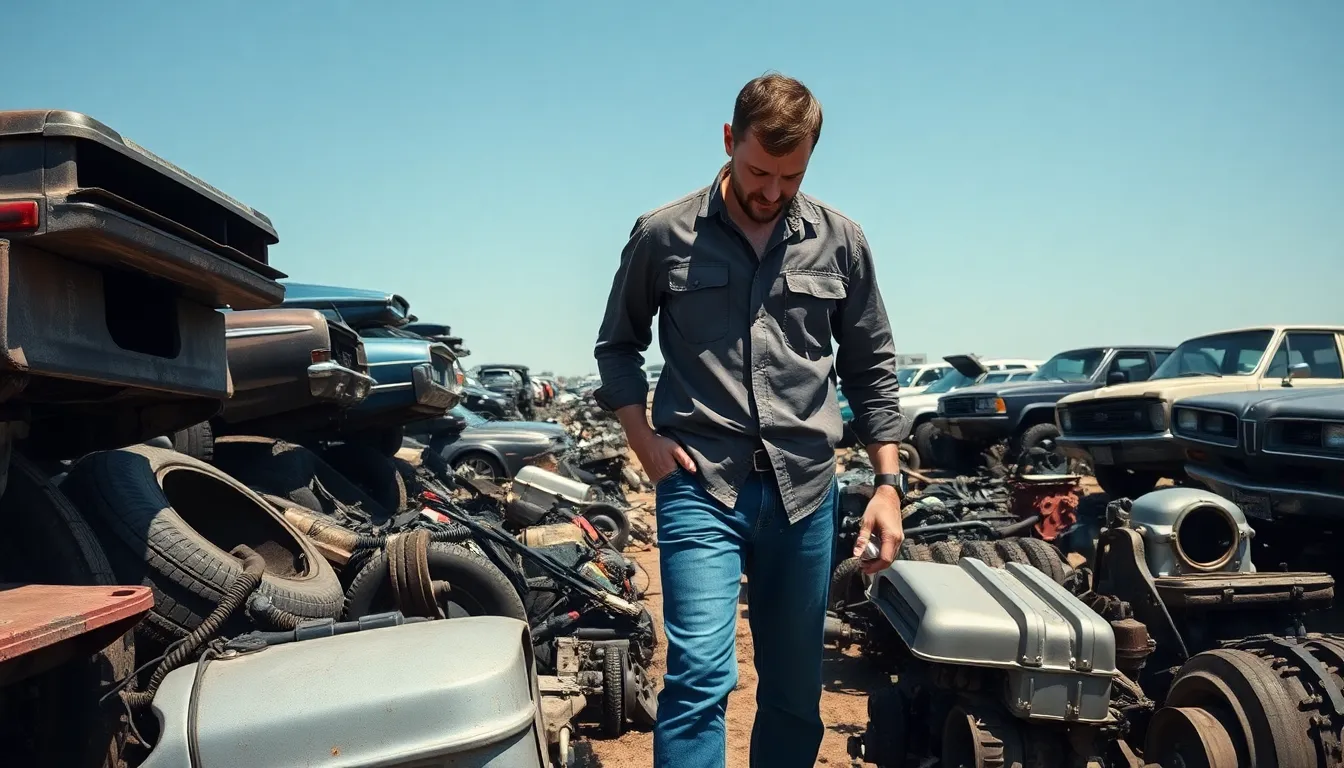Searching for a junkyard that’s open now? Look no further! Whether you’re on a treasure hunt for spare parts or just curious about what hidden gems might be lurking in the heaps, a local junkyard can be a goldmine. Imagine stumbling upon that elusive car part that could save you a trip to the mechanic—talk about a win-win!
Table of Contents
ToggleOverview of Junkyards
Junkyards serve as essential hubs for car enthusiasts and casual DIYers alike. They provide a diverse range of salvaged car parts, often at a fraction of the cost of new items. Accessing these locations can uncover components such as engines, transmissions, and body panels. Many individuals find that visiting a junkyard offers opportunities to save significant amounts of money on repairs.
Local junkyards vary in size and inventory but generally feature both domestic and foreign vehicles. Most operate on a self-service model, allowing customers to explore and extract parts directly from vehicles. That hands-on approach makes it easy to inspect items and assess their condition before purchasing.
In some cases, junkyards also buy cars that owners wish to dispose of, creating a steady supply of vehicles for parts. Each visit presents the chance to stumble upon rare finds that may no longer be available in retail stores. It’s common for customers to leave with unexpected treasures along with their necessary parts.
Many junkyards keep regular hours and offer online inventory checks. This feature helps customers determine available items before making the trip. Those searching for specific parts can often contact junkyards ahead of their visit for assistance.
Understanding local junkyard hours can facilitate effective planning. Finding a junkyard open now greatly improves the chances of obtaining required items quickly. Thus, local junkyards represent valuable resources for cost-effective repairs and unique parts.
Benefits of Using Junkyards

Visiting junkyards offers numerous advantages for car owners and enthusiasts. Cost savings and positive environmental impact make these locations appealing for those in need of auto parts.
Cost Savings
Junkyards provide significant savings on car parts. Customers often find used components at a fraction of the cost of new items. Many junkyards sell alternators, transmissions, or bumpers for 30-50% less than retail prices. A visit can lead to quick bottom-line benefits, particularly for DIY repairs. Budget-conscious individuals appreciate the affordable alternatives available, making routine maintenance or repairs financially feasible.
Environmental Impact
Choosing to shop at junkyards promotes environmental sustainability. Recycling car parts reduces waste and minimizes the need to manufacture new components. Each salvaged part decreases the number of vehicles in landfills and conserves natural resources. Additionally, reclaimed materials lessen the carbon footprint associated with producing new parts. Supporting junkyards contributes to a circular economy, encouraging eco-friendly practices in the automotive industry while fostering responsible consumer behavior.
Finding a Junkyard Near You
Locating a nearby junkyard can enhance your search for spare parts. Several convenient methods exist for finding these valuable resources.
Online Resources
Many websites specialize in locating junkyards. Users can visit platforms such as Car-Part.com or JunkyardDog.com for extensive directories. These sites provide real-time inventory updates. They also list contact information for each junkyard, ensuring easy communication. Entering specific vehicle details allows for precise searches.
Searching through social media platforms can yield local junkyard recommendations. Community groups often share insights and experiences. Utilizing these digital tools can streamline the parts-hunting process.
Local Directories
Local directories serve as another effective resource. Yellow Pages and Yelp list junkyards by area, featuring customer reviews and ratings. Reviews indicate quality and reliability, guiding potential visitors.
Another useful option is to check with local automotive shops. Mechanics frequently partner with nearby junkyards and can provide direct referrals. Direct calls to nearby junkyards can also confirm hours of operation and available parts. Keeping a list of nearby facilities can make visits more organized and efficient.
What to Expect at the Junkyard
Visitors to the junkyard can look forward to a unique experience. Expect a self-service model where customers personally search for and retrieve parts from various vehicles.
Services Offered
Junkyards typically provide a range of services beyond selling parts. Many offer car pickup services for those looking to sell their vehicles. They may also recycle materials from old cars, ensuring environmentally friendly practices. Some junkyards help with parts identification, guiding customers in finding the right components. Additionally, many provide tools for customers to extract parts safely, enhancing the overall shopping experience.
Common Inventory
A diverse inventory awaits at junkyards. Engines, transmissions, and body parts often line the lots, ready for reuse. Customers frequently find essential components like headlights and bumpers among the salvaged items. Tires are commonly available, providing a budget-friendly option for replacements. Various makes and models mean possibilities range widely, offering specific parts for popular vehicles.
Tips for Visiting a Junkyard
Prioritize safety when heading to a junkyard. Wear closed-toe shoes to protect feet from shifting debris, and use gloves when handling parts. Bring tools specifically requested by the junkyard, such as wrenches or screwdrivers, to facilitate easy part removal.
Additionally, arrive prepared by researching available parts online. Many junkyards offer websites or directories showcasing their inventory, making it simpler to find necessary components. Familiarize yourself with pricing as well; knowing the average costs for common parts can enhance bargaining power.
Inspect vehicles carefully upon arrival. Look for signs of wear and tear, and assess whether specific parts are in good condition. Take note of potential replacements before extraction. Measure dimensions when needed; this ensures parts will fit properly when reinstalled.
Communicate with staff for assistance and guidance. Junkyard employees often provide insights on vehicle history or parts availability, offering valuable knowledge to optimize the experience. Don’t hesitate to ask for help while retrieving heavy items, as safety should always be the priority.
Finally, keep the environment in mind. Waste is minimized when customers recycle car parts, so consider contributing to eco-friendly practices. Many junkyards support sustainable efforts, making part reclamation beneficial for both individuals and the planet.
Visiting a junkyard offers a unique opportunity to find affordable car parts while promoting sustainability. The thrill of exploring a treasure trove of salvaged vehicles can lead to significant savings and valuable discoveries. With the right preparation and knowledge, anyone can make the most of their trip.
By utilizing online resources and local directories, finding a nearby junkyard becomes a straightforward task. Whether someone’s a seasoned DIYer or just looking for a budget-friendly solution, the benefits of shopping at a junkyard are undeniable. Embracing this eco-friendly approach not only supports personal projects but also contributes to a greener planet.





